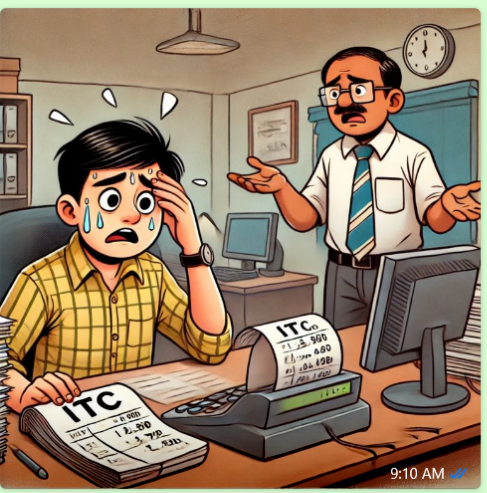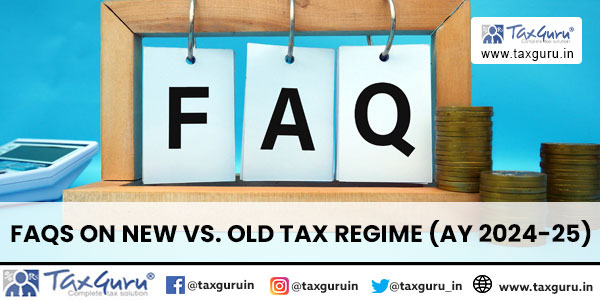Case Law Details
Manufacturing process includes packing, stitching, mounting and dispatch of finished goods, therefore, workers employed in allied activities were to be treated as those employed in manufacturing process. However, in the instant case, admittedly, a Works Manager is like a highly technical qualified worker having managerial responsibility, likewise, a Supervisor is also like a highly skilled supervisory worker. Therefore, both these persons cannot be taken out from the categories of workers. It is well known that ‘manufacturing process’ includes all activities in relation to manufacture, therefore, the same encompasses the entire process of converting raw material into finished goods to make it commercially expedient and even handling and transfer of raw material is integrally connected with the process of manufacture.
Full Text of the ITAT Order is as follows:-
Revenue is in appeal before the Tribunal against order of the ld.CIT(A)-II, Ahmedabad dated 10.3.2014 passed for the Asstt.Year 2010-2011.
2. Solitary substantial grievance of the Revenue is that the ld.CIT(A) has erred in deleting addition of Rs.2,93,03,279/- which was added by the AO by making a dis allowance of claim of deduction under section 80IB(4) of the Income Tax Act, 1961.
3. Brief facts of the case are that the assessee is a partnership firm engaged in the business of manufacturing of menthol crystals & allied products. Its industrial undertaking was situated at SIDCO Industrial Complex, Bari Brahmna, J&K. It has filed its return of income on 29.10.2010 declaring total income at NIL after claiming deduction under section 80IB of the Income Tax Act. According to the AO, a survey under section 133A of the Income Tax Act was carried out at the premises of the assessee on 28.1.2010. Therefore, being a case of survey, it was selected for scrutiny assessment and notice under section 143(2) of the act was issued on 8.2.2011 which was duly served upon the assessee. On scrutiny of the accounts, it revealed to the AO that statement of Shri Gajanan Agrawal, partner of the assessee-firm was recorded at the time of survey. In his reply, he has disclosed that assessee- firm has employed 9 workers plus guards. The AO has reproduced the answer given by Shri Gajanan Agrawal during his statement recorded at the time of survey. This question and answer read as under:
“Q. Please state how many workers are there in your factory – Tripti Menthol Industries?
A. At present there are Nine workers + 2 guards. The details of which is
Labourers Unskilled : 5
Manager : 1
Security guards : 2
Operators : 3”
On the strength of this statement, the ld.AO harbored a belief that one of the conditions enumerated in section 80IB(2)(iv) of the Act is that industrial undertaking for claiming deduction under this section would employ ten or more workers in manufacturing process carried out by it with the aid of power, or employ twenty or more workers in a manufacturing process carried on without the aid of power. According to the AO, the assessee did not fulfill this condition, and therefore, did not entitle for deduction under section 80IB(4). He accordingly disallowed claim of the assessee.
4. Dissatisfied with the disallowance, the assessee carried the matter in appeal before the ld.CIT(A). It filed written submissions and contended that similar aspect was raised in the Asstt.Year 2009-10 also wherein the ld.CIT(A) has allowed the claim of the assessee. The CIT(A) has taken cognizance of the submission made by the assessee and deleted the disallowance.
5. The ld.DR while impugning the order of the ld.CIT(A) contended that assessee failed to produce sufficient material indicating the fact that it has employed more than 10 workers. In other words the stand of the Revenue is that for proving the statement of a partner as erroneous, the assessee should have produced sufficient evidence exhibiting the fact that partner has given such statement under misconception of fact. The assessee failed to give that material before the AO. Therefore, the ld.AO has rightly disallowed the claim and the CIT(A) failed to appreciate the controversy in right perspective. The ld.DR took us through the details of various workers placed by the assessee at page no. 26 to 175 of the paper book and pointed out that there is no coherence in the payment of salary continuously throughout the year. Some of the vouchers are only Rs. 670. He drew our attention towards page no. 91 of the paper book and submitted that which labor the assessee could get for a sum of Rs. 670/- ? On the strength of these shortcomings, he contended that the ld.CIT(A) has not appreciated the controversy in consonance with the record available.
6. On the other hand, the ld.counsel for the assessee relied upon the order of the CIT(A). He pointed out that the assessee has submitted complete details exhibiting payment made by the assessee, attendance register maintained in the computer, ledger account of salary/ wages paid to the workers. Copies of labor accounts bills and the details of security agency services were also given to the AO. A comprehensive chart showing month-wise details of the workers employed in was also produced. He also pointed out that all these facts were placed by the assessee in the written submissions filed before the ld.CIT(A), which is filed on page nos.1 to 9 of the paper book. Thereafter, he relied upon the orders of the ITAT, Mumbai Bench in the case of ACIT Vs. Ms. Richa Chada reported in 96 ITD 325 (Mum). Judgment of Hon’ble Punjab & Haryana High Court in the case of CIT Vs. Smt. Bimla Rani, 56 taxmann.com 316 and judgment of Hon’ble Allahabad High Court in the case of CIT Vs. Sultan & Sons Rice Mill, 272 ITR 181. He further relied upon the judgment of the Hon’ble Bombay High Court in the case of CIT Vs. Jyoti Plastics Works P. Ltd., 339 ITR 491. He placed on record copies of all these judgments.
7. We have duly considered rival contentions and gone through the record carefully. We are of the view that sections 80IB(1), (2) and (4) has direct bearing on the controversy. Therefore, it is imperative upon us to take note of these clauses. It read as under:
”
80-IB.(1) Where the gross total income of an assessee includes any profits and gains derived from any business referred to in sub-sections (3) to (11), (1 1A) and (11 B) (such business being hereinafter referred to as the eligible business), there shall, in accordance with and subject to the provisions of this section, be allowed, in computing the total income of the assessee, a deduction from such profits and gains of an amount equal to such percentage and for such number of assessment years as specified in this section.
(2) This section applies to any industrial undertaking which fulfills all the following conditions, namely :—
(i) it is not formed by splitting up, or the reconstruction, of a business already in existence:
Provided that this condition shall not apply in respect of an industrial undertaking which is formed as a result of the re-establishment, reconstruction or revival by the assessee of the business of any such industrial undertaking as is referred to in section 33B, in the circumstances and within the period specified in that section;
(ii) it is not formed by the transfer to a new business of machinery or plant previously used for any purpose;
(iii) it manufactures or produces any article or thing, not being any article or thing specified in the list in the Eleventh Schedule, or operates one or more cold storage plant or plants, in any part of India:
Provided that the condition in this clause shall, in relation to a small scale industrial undertaking or an industrial undertaking referred to in sub-section (4) shall apply as if the words “not being any article or thing specified in the list in the Eleventh Schedule” had been omitted.
Explanation 1 .— For the purposes of clause (ii), any machinery or plant which was used outside India by any person other than the assessee shall not be regarded as machinery or plant previously used for any purpose, if the following conditions are fulfilled, namely :—
(a) such machinery or plant was not, at any time previous to the date of the installation by the assessee, used in India;
(b) such machinery or plant is imported into India from any country outside India; and
(c) no deduction on account of depreciation in respect of such machinery or plant has been allowed or is allowable under the provisions of this Act in computing the total income of any person for any period prior to the date of the installation of the machinery or plant by the assessee.
Explanation 2.— Where in the case of an industrial undertaking, any machinery or plant or any part thereof previously used for any purpose is transferred to a new business and the total value of the machinery or plant or part so transferred does not exceed twenty per cent of the total value of the machinery or plant used in the business, then, for the purposes of clause (ii) of this sub-section, the condition specified therein shall be deemed to have been complied with;
(iv) in a case where the industrial undertaking manufactures or produces articles or things, the undertaking employs ten or more workers in a manufacturing process carried on with the aid of power, or employs twenty or more workers in a manufacturing process carried on without the aid of power.
xxx xxx xxx
xxx xxx xxx
(4) The amount of deduction in the case of an industrial undertaking in an industrially backward State specified in the Eighth Schedule shall be hundred per cent of the profits and gains derived from such industrial undertaking for five assessment years beginning with the initial assessment year and thereafter twenty-five per cent (or thirty per cent where the assessee is a company) of the profits and gains derived from such industrial undertaking:
Provided that the total period of deduction does not exceed ten consecutive assessment years (or twelve consecutive assessment years where the assessee is a co-operative society) subject to fulfillment of the condition that it begins to manufacture or produce articles or things or to operate its cold storage plant or plants during the period beginning on the 1st day of April, 1993 and ending on the 31st day of March, 2004:
Provided further that in the case of such industries in the North-Eastern Region, as may be notified by the Central Government, the amount of deduction shall be hundred per cent of profits and gains for a period of ten assessment years, and the total period of deduction shall in such a case not exceed ten assessment years:
Provided also that no deduction under this sub-section shall be allowed for the assessment year beginning on the 1st day of April, 2004 or any subsequent year to any undertaking or enterprise referred to in sub-section (2) of section 80-IC:
Provided also that in the case of an industrial undertaking in the State of Jammu and Kashmir, the provisions of the first proviso shall have effect as if for the figures, letters and words “31st day of March, 2004”, the figures, letters and words “31st day of March, 2012” had been substituted:
Provided also that no deduction under this sub-section shall be allowed to an industrial undertaking in the State of Jammu and Kashmir which is engaged in the manufacture or production of any article or thing specified in Part C of the Thirteenth Schedule.”
8. A perusal of this section would indicate that if the gross total income of an assessee includes any profit or gain derived from any business referred to sub-sections 3 to ii, then such business being referred to as an “eligible business” would be entitled to claim deduction as mentioned in terms of percentage in respective section. 1t is pertinent to observe that the assessee’s manufacturing undertaking is situated in a background area of the State and it is eligible for deduction as contemplated in sub-section (4). This deduction is subject to the conditions enumerated in sub-section (2) of section 801B. The AO has not disputed eligibility of assessee of fulfillment of the conditions mentioned in section 801B(i)(4) except that the assessee failed to fulfill conditions provided in sub-clause (iv) of sub-section (2) which contemplates that in a case where an industrial undertaking manufacturers or produces article or things, the undertaking employs ten or more workers in a manufacturing process carried on with the aid of power. According to the AO, since the assessee was manufacturing with the aid of power, therefore, it should employ ten workers in the manufacturing process. The AO is harping upon the statement of partner, Shri Gajanan Agrawal and observed that one manager and two guards were required to be excluded from the total eleven persons employed by the assessee.
9. On the other hand, stand of the assessee is that not only eleven, it has employed thirteen persons. Partner has committed mistake by giving details. The break-up of the workers given by the partners in his reply is unskilled-5, Manager-i, Security guards -2 and Operators-3. Thus, whole controversy boils down to a very small issue – whether the Manager/operators are to be counted in the list of workers who can be stated to have been employed in the manufacturing process. For buttressing this proposition, the assessee has placed reliance upon a large number of decisions, wherein similar aspects has fallen for consideration.
10. We would like to first make decision of the Hon’ble Punjab & Haryana High Court in the case of Smt.Bimla Rani (supra). In this case, the assessee was an individual and engaged in the business of manufacturing of polythene bags and tubes (packing material). A search under section 132 of the Income Tax Act was carried out at her premises on 3.9.2004. On account of this incident, it revealed to the AO that the assessee has furnished list of eight workers involved in the manufacturing process. Besides that two other employees one working as supervisor and other as Manager was also considered by the assessee for claiming deduction under section 80IB. The AO disallowed claim of the assessee on the ground that she had not employed ten workers. But on appeal, the ld.CIT(A) allowed her claim which met approval of ITAT also. Department took it in appeal before the Hon’ble High Court and the Hon’ble High Court held that manager and supervisor are involved in manufacturing process, and therefore, they are also to be counted while calculating number of workers employed by the assessee. The discussion made by the Hon’ble High Court in para-14 of the judgment reads as under:
“14. The main argument of the revenue that two persons, namely, Surinder Mittal- Supervisor and Narinder Mohan Mittal- Works Manager, could not be counted as workers in addition to other eight workers, although is attractive but we are not inclined to accept the aforesaid plea on behalf of the revenue, since various processes starting from purchase of raw material and till the sale of finished goods, form an integral part of the manufacturing process. Therefore, the words “employs ten or more workers in a manufacturing process” normally would cover the entire process carried on by the industrial undertaking for converting the raw material into finished goods. For the aforesaid proposition, reference can be made to CITv. Sultan & Sons Rice Mill [20051 272 ITR 181/145 Taxman 506 (All.). CIT Vs. Hanuman Rice Mills [20051 275 1 TR 79 (MP) and CIT Vs. Ajmani Industries [20061 153 Taxman 43 (All.). We are of the considered opinion that the view of the ITAT that normally owner could not be counted as a worker but in the instant case, the dispute revolved around works manager and supervisor, therefore substantial compliance about the number of workers would satisfy the requirement under the Act and the position during abnormal situations could not be counted is absolutely justified. Likewise reliance by the ITAT on the decision of the jurisdictional High Court in Ansysco ‘s case (supra), is also well placed. In Ansysco ‘s case (supra), the issue was whether the Tribunal was justified in upholding the order of the first Appellate Authority in allowing deduction under Section 80-IA of the Act on the ground that manufacturing process includes packing, stitching, mounting and dispatch of finished goods, therefore, workers employed in allied activities were to be treated as those employed in manufacturing process. However, in the instant case, admittedly, a Works Manager is like a highly technical qualified worker having managerial responsibility, likewise, a Supervisor is also like a highly skilled supervisory worker. Therefore, both these persons cannot be taken out from the categories of workers. It is well known that ‘manufacturing process’ includes all activities in relation to manufacture, therefore, the same encompasses the entire process of converting raw material into finished goods to make it commercially expedient and even handling and transfer of raw material is integrally connected with the process of manufacture. In the aforementioned background, we see no reason to disagree with the finding recorded by the ITAT upholding the findings of the CIT (A) qua deduction under Section 80-IB.”
11. Similarly, an identical issue came up before the ITAT in the case of ACIT Vs. Ms. Richa Chadha (supra). In this case, the assessee was engaged in manufacturing of chemicals. The AO did an inspection at the premises of the assessee and observed that the assessee was not having ten workers. The Tribunal while considering details of the workers employed by the assessee observed that manufacturing process means not only manufacturing activity, but also such other activities supporting the main manufacturing process. Thus, in a chemical factory, if certain workers are employed for bringing chemicals to the site, and they were employed for maintaining and preserving the final product or its transportation, can also be said to be employed in the manufacturing process. In other words, security guards employed by the assessee in the case before us would also be considered as part of the workers engaged in the manufacturing process. Apart from these two cases, decision of the Hon’ble Allahabad High Court in the case of CIT Vs. Sultan & Sons Rice Mill (Supra) was also brought to our notice. The assessee was a registered firm manufacturing rice and dealing in food grains. It had claimed deduction under section 80HH and 80J. This deduction was disallowed by the AO on the ground that the assessee’s rice and rice bran process was automatic and did not employ ten or more workers in the manufacturing process. The Hon’ble High Court has held that expression “manufacturing process” is to be construed liberally and process would be considered as started with procurement of raw-material and terminates with production of the finished articles. Thus, all the workers engaged throughout the process would be considered to be employed in the manufacturing process of rice and rice bran. The Hon’ble High Court has upheld conclusion of the Tribunal that workers who were engaged in palledar, hulling labour, bhoosi hatwai, fataknewala were also to be counted in the list of workers employed in manufacturing process. The Hon’ble Bombay High Court has also concurred with this view of Hon’ble Allahabad High Court in the case of CIT Vs. Jyoti Plastics Works P. Ltd. (supra). Thus, manager, supervisor and security guards are also to be counted in the list of workers. The AO has not used any other evidence against the assessee except statement given by Shri Gajanan Agrawal which has been extracted (supra). There is no reference to any other material at the end of the AO in the assessment order. We find that before the ld.CIT(A), the assessee has reiterated its stand as to how it has buttressed its claim demonstrating the fact that more than ten workers were employed. The assessee has produced following details during the assessment proceedings in which no defects have been pointed out:
“a) Vouchers by which payments of salaries/wages were made to the workers in each month (vouchers of all months)
b) Print out of the workers’ register maintained in the computer containing the complete details of the workers along with the nature of work done by them.
c) The copy of ledger account of salary/ wages paid to above workers
d) The appellant also employed security guards in addition to above workers. These security guards were employed through security agencies. The copies of ledger accounts and bills of the Securities Agencies were furnished to the learned AO. These security guards were for checking the inwards and outwards of the factory.
e) A comprehensive chart containing month-wise details of the workers employed was also furnished.
We enclose herewith copies of all the above documents which were furnished to ld.AO. From these documents it is clearly proved that the appellant had employed thirteen to sixteen workers throughout the year.”
12. We have considered all these materials available in the paper book in the light of the authoritative pronouncements of Hon’ble Punjab and Haryana High Court and Hon’ble Bombay High Court. On due consideration of all these materials, we are of the view that the CIT(A) has rightly allowed the deduction to the assessee. We do not find any merit in the appeal of the Revenue. It is dismissed.
13. In the result, the appeal of the Revenue is dismissed.
Order pronounced in the Court on 22nd May, 2017 at Ahmedabad.


























